 1987 Citroen BX I Break (Phase II, 1987) Dimensions, Size & Specs
1987 Citroen BX I Break (Phase II, 1987) Dimensions, Size & SpecsMeasurements of the 1987 Citroen BX I Break, engineered for optimal performance and comfort
| Dimensions | |
|---|---|
| Length: | 4399 mm173.2 in14.4 ft |
| Width: | 1682 mm66.2 in5.5 ft |
| Height: | 1410-1440 mm55.5-56.7 in4.6-4.7 ft |
| Trunk Capacity: | 512 liter18.1 cu ft |
| Trunk Capacity (Max): | 1803 liter63.7 cu ft |
| Weight Specifications | |
| Curb Weight: | 940-1180 kg2072-2601 lbs |
| Maximal permitted Weight: | 1455-1720 kg3208-3792 lbs |
| Tire Specifications | |
| Rims Size: |
|
| Tire Sizes: |
|
The Citroen BX I Break (Phase II, 1987) is a distinctive French station wagon that was produced from 1986 to 1994, blending practicality with the unique styling and engineering Citroen was known for during the late 1980s. This iteration, the Phase II, brought subtle updates and refinements to the original BX Break body style, emphasizing both functionality and a comfortable driving experience. The overall length of the vehicle measures 4,399 mm (173.2 inches), with a width of 1,682 mm (66.2 inches), making it a moderately sized station wagon well-suited for families or professionals needing versatile cargo space. Its adjustable height ranges between 1,410 mm to 1,440 mm (55.5 to 56.7 inches), which improves aerodynamics and driving comfort. The curb weight varies between 940 kg and 1,180 kg (2,072 to 2,601 lbs), depending on equipment and configuration, while its maximum weight capacity ranges from 1,455 kg to 1,720 kg (3,209 to 3,792 lbs), showcasing its capability to carry considerable loads safely.
One of the most practical features of the BX I Break Phase II is its luggage capacity. With rear seats positioned upright, the cargo space measures approximately 512 liters (18.1 cubic feet), offering ample room for daily errands or weekend trips. When the rear seats are folded down, this capacity expands dramatically to 1,803 liters (63.6 cubic feet), making it highly adaptable for transporting larger or bulkier items like sports equipment or furniture. This versatility is enhanced by 14-inch rims fitted with tires sized either 165/70 R14 or 175/65 R14, which provide a balanced ride quality combining comfort and handling across varying road conditions.
Overall, the Citroen BX I Break (Phase II, 1987) is celebrated for its practical size and robust engineering. Its dimensions place it comfortably within the compact-to-mid-size station wagon segment, appealing to drivers who prefer a car that offers both generous interior space and manageable exterior proportions for urban and suburban environments. The BX continues to hold a special place among classic French cars for its innovative design and clever use of interior volume, maintaining relevance for car enthusiasts and collectors interested in vehicles from the late 20th century.
Discover the standout features that make the 1987 Citroen BX I Break a leader in its class
Have a question? Please check our knowledgebase first.
The 1987 Citroën BX I Break (Phase II) station wagon measures 4399 mm (approximately 173.1 inches) in length, 1682 mm (about 66.2 inches) in width, and its height ranges between 1410 mm to 1440 mm (55.5 to 56.7 inches). These dimensions provide a compact yet spacious exterior footprint typical for station wagons from the late 1980s, balancing maneuverability with interior space.
The curb weight of the 1987 Citroën BX I Break (Phase II) varies between 940 kg and 1180 kg (approximately 2,072 to 2,601 pounds), depending on the specific variant and equipment level. The maximum weight, which includes passengers and cargo, ranges from 1455 kg to 1720 kg (around 3,209 to 3,792 pounds). The relatively lightweight contributes to nimble handling and fuel efficiency, while the maximum load capacity supports versatile usage as a family or cargo vehicle.
With the rear seats in the upright position, the Citroën BX I Break (Phase II) provides a luggage capacity of 512 liters (about 18.1 cubic feet). When the rear seats are folded down, the luggage capacity expands significantly to 1803 liters (approximately 63.6 cubic feet). This flexibility makes the BX I Break highly practical for carrying large or bulky items, enhancing its appeal as a station wagon.
The Citroën BX I Break (Phase II) is equipped with 14-inch rims as standard. The tire sizes commonly used are 165/70 R14 or 175/65 R14. These tire specifications strike a balance between comfort, handling, and road grip, suitable for both urban and rural driving conditions prevalent during its production period.
Yes, the 1987 Citroën BX I Break (Phase II) fits comfortably into a standard home garage. Its length of 4399 mm (173.1 inches) and width of 1682 mm (66.2 inches) align well with typical garage spaces, which often allow for about 5 to 6 meters (16.4 to 19.7 feet) of length and 2.4 to 3 meters (7.9 to 9.8 feet) of width. The moderate height (1410-1440 mm or 55.5-56.7 inches) also ensures ample clearance under standard garage doors.
The Citroën BX I Break (Phase II) has a height ranging from 1410 mm to 1440 mm (55.5 to 56.7 inches), which can differ due to suspension adjustments or specific trim variants. A slightly taller height offers more headroom for passengers and can improve cargo stacking ability, while a lower ride height can enhance aerodynamic efficiency and handling dynamics. This subtle range helps balance comfort and performance for everyday usability.
The 1987 Citroën BX I Break (Phase II) represents an evolution over the original BX I Break introduced in 1983. Dimensionally, it maintains a similar length and width but features subtle refinements in styling and aerodynamics. The Phase II update enhanced body panel designs and trim features while retaining the practical station wagon layout. Improvements in suspension and materials contributed to a lighter overall curb weight in some variants, bolstering ride quality and fuel efficiency compared to its predecessor.
The Citroën BX I Break (Phase II), with its length of 4399 mm (173.1 inches) and a large luggage capacity of up to 1803 liters (63.6 cubic feet) when seats are folded, stands out as a practical station wagon among late 1980s competitors. Its relatively compact exterior dimensions make it easier to maneuver than larger wagons like the Ford Sierra Estate or Opel Ascona Caravan, while still offering competitive cargo versatility. Its lightweight construction and distinctive hydropneumatic suspension also offer a unique combination of comfort and ride quality difficult to find in other models of the era.
The Citroën BX I Break (Phase II) has a width of 1682 mm (approximately 66.2 inches). This width provides a good balance between on-road stability and the ability to navigate narrow urban streets or parking areas. Internally, this width offers sufficient shoulder room for passengers in the front and rear seats, contributing to comfortable seating while keeping the vehicle's exterior manageable size.
The practical advantages of the 1987 Citroën BX I Break (Phase II) come from its optimal weight and size combination. With a curb weight between 940 kg and 1180 kg (2,072 to 2,601 pounds), it remains light enough to deliver agile handling and fuel-efficient operation. The moderate overall length and width ensure it can easily navigate city environments and fit into standard garages. Additionally, its large maximum weight capacity (up to 1720 kg or 3,792 pounds) and expansive cargo area (512 liters to 1803 liters) make it highly versatile for daily driving, family use, or carrying considerable luggage or goods.
Discover similar sized cars.
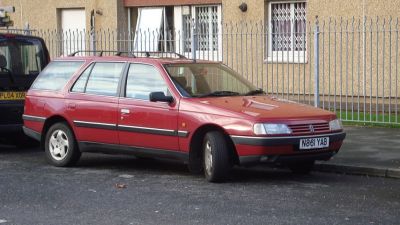
| Model Year: | 1992 |
|---|---|
| Length: | 4398 mm173.1 in |
| Width: | 1704-1714 mm67.1-67.5 in |
| Height: | 1445-1481 mm56.9-58.3 in |
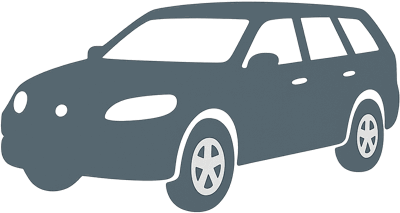
| Production: | 1988-1992 |
|---|---|
| Model Year: | 1988 |
| Length: | 4398 mm173.1 in |
| Width: | 1714 mm67.5 in |
| Height: | 1450 mm57.1 in |
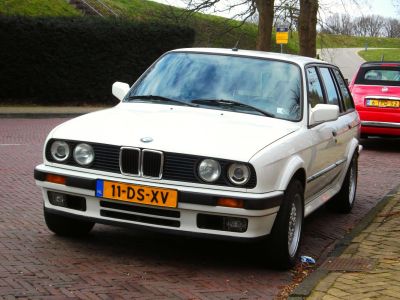
| Production: | 1987-1994 |
|---|---|
| Model Year: | 1988 |
| Length: | 4325 mm170.3 in |
| Width: | 1645 mm64.8 in |
| Height: | 1380 mm54.3 in |

| Production: | 2001-2007 |
|---|---|
| Model Year: | 1999 |
| Length: | 4375 mm172.2 in |
| Width: | 1690 mm66.5 in |
| Height: | 1460 mm57.5 in |

| Production: | 1992-2002 |
|---|---|
| Model Year: | 1992 |
| Length: | 4420 mm174.0 in |
| Width: | 1690 mm66.5 in |
| Height: | 1470 mm57.9 in |
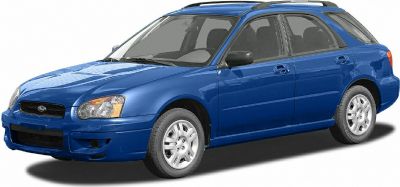
| Production: | 2002-2005 |
|---|---|
| Model Year: | 2003 |
| Length: | 4415 mm173.8 in |
| Width: | 1695 mm66.7 in |
| Height: | 1465 mm57.7 in |
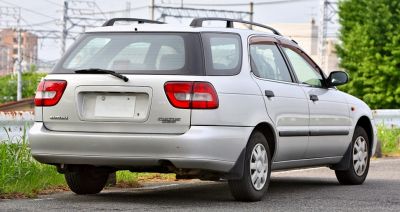
| Production: | 1995-1998 |
|---|---|
| Model Year: | 1995 |
| Length: | 4375 mm172.2 in |
| Width: | 1690 mm66.5 in |
| Height: | 1460 mm57.5 in |
